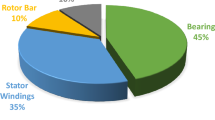Abstract
This paper investigates and empirically evaluates and compares six popular computational intelligence models in the context of fault density prediction in aspect-oriented systems. These models are multi-layer perceptron (MLP), radial basis function (RBF), k-nearest neighbor (KNN), regression tree (RT), dynamic evolving neuro-fuzzy inference system (DENFIS), and support vector regression (SVR). The models were trained and tested, using leave-one-out procedure, on a dataset that consists of twelve aspect-level metrics (explanatory variables) that measure different structural properties of an aspect. It was observed that the DENFIS, SVR, and RT models were more accurate in predicting fault density compared to the MLP, RBF, and KNN models. The MLP model was the worst model, and all the other models were significantly better than it.
Similar content being viewed by others
Explore related subjects
Discover the latest articles, news and stories from top researchers in related subjects.References
Basili V, Briand L, Melo W (1996) A validation of object-oriented design metrics as quality indicators. IEEE Trans Softw Eng 22: 751–761
Bishop C (1995) Neural networks for pattern recognition. Oxford University Press, Oxford
Briand L, Wust J, Daly J, Porter V (2000) Exploring the relationships between design measures and software quality in object-oriented systems. J Syst Softw 51: 245–273
Buhmann M, Albowitz M (2003) Radial basis functions:theory and implementations. Cambridge University Press, Cambridge
Burges C (1998) A tutorial on support vector machines for pattern recognition. Data Min Knowl Discov 2: 121–167
Ceylan E, Kutlubay F, Bener A (2006) Software defect identification using machine learning techniques. In: The 32nd EUROMICRO conference on software engineering and advanced applications (EUROMICRO-SEAA’06), pp 240–247
Conte S, Dunsmore H, Shen V (1986) Software engineering metrics and models. Benjamin/Cummings, Menlo Park
Cristianini N, Shawe-Taylor J (2000) An introduction to support vector machines and other kernel-based learning methods. Cambridge University Press, Cambridge
Duda R, Hart P, Stork D (2001) Pattern classification, 2nd edn. wiley, New York
El-EmamKMeloW Machado J (2001) The prediction of faulty classes using object- oriented design metrics. J Syst Softw 56: 63–75
Elish K, Elish M (2008) Predicting defect-prone software modules using support vector machines. J Syst Softw 81: 649–660
Filman R, Elrad T, Clarke S, Aksit M (2004) Aspect-oriented software development. Addison-Wesley Professional, Reading
Fioravanti F, Nesi P (2001) A study on fault-proneness detection of object-oriented systems. In: Fifth European conference on software maintenance and reengineering, pp 121–130
Gun S (1998) Support vector machines for classification and regression. University of Southampton, technical report
Guo L, Ma Y, Cukic B, Singh H (2004) Robust prediction of fault-proneness by random forests. In: 15th international symposium on software reliability engineering (ISSRE’04), pp 417–428
Gyimothy T, Ferenc R, Siket I (2005) Empirical validation of object-oriented metrics on open source software for fault prediction. IEEE Trans Softw Eng 31: 897–910
Han J, Kamber M (2001) Data mining: concepts and techniques, 2nd edn. Morgan Kauffman, San Francisco
Hardle W (1989) Applied nonparametric regression. Cambridge university, Cambridge
Kasabov N, Song Q (2002) DENFIS: dynamic evolving neural-fuzzy inference system and its application for time-series prediction. IEEE Trans Fuzzy Syst 10: 144–154
Khoshgoftaar T, Allen E, Deng J (2002) Using regression trees to classify fault-prone software modules. IEEE Trans Reliab 51: 455–462
Korhonen K, Kangas A (1997) A application of nearest-neighbour regression for generalizing sample tree information. Scand J For Res 12: 97–101
Myrtveit I, Stensrud E, Shepperd M (2005) Reliability and validity in comparative studies of software prediction models. IEEE Trans Softw Eng 31: 380–391
Orr M (1996) Introduction to radial basis function networks, Institute for Adaptive and Neural Computation of the Division of Informatics at Edinburgh University, Scotland technical report
Quah T, Thwin M (2003) Application of neural networks for software quality prediction using object-oriented metrics. In: International conference on software maintenance (ICSM’03), pp 116–125
Quinlan R (1986) Induction of decision trees. Mach Learn 1: 81–106
Smola A (1998) Learning with kernels. In: Department of Computer Science: Technical University Berlin, Germany
Vapnik V (1995) The nature of statistical learning theory. Springer, New York
Wang Y, Witten I (1997) Inducing model trees for continuous classes. In: 9th European conference on machine learning, pp 128–137
Witten I, Frank E (2005) Data mining practical machine learning tools and techniques 2nd edn. Morgan Kaufmann, San Francisco
Yu P, Systa T, Muller (2002) Predicting fault-proneness using OO metrics an industrial case study. In: Sixth European conference software maintenance and reengineering, pp 99–107
Author information
Authors and Affiliations
Corresponding author
Rights and permissions
About this article
Cite this article
Elish, M.O. A comparative study of fault density prediction in aspect-oriented systems using MLP, RBF, KNN, RT, DENFIS and SVR models. Artif Intell Rev 42, 695–703 (2014). https://doi.org/10.1007/s10462-012-9348-9
Published:
Issue Date:
DOI: https://doi.org/10.1007/s10462-012-9348-9




